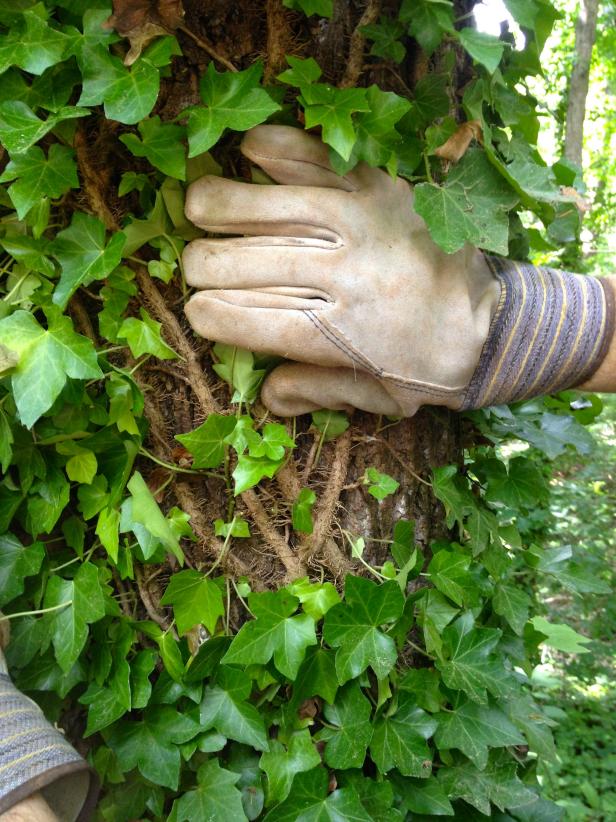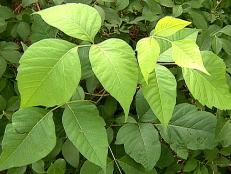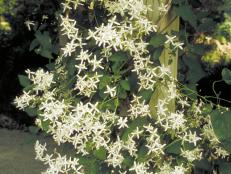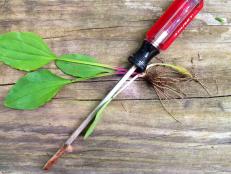Remove Clinging Vines


Photo by Lynn Coulter
Clematis vines, with their delicate tendrils and pretty blooms, look great on your mailbox post. Black-eyed Susans that twine on a trellis add a lush look to your garden.
Other vines are thugs. They invade your yard, scrambling to the tops of trees, smothering hedges and blocking the sunlight from low-growing greenery. Their roots compete with desirable plants for moisture and nutrients, stunting or even killing them.
Some vines, such as Smilax—commonly called cat briar—are nasty characters, studded with stickers or thorns. Others, like poison oak, produce an oily resin that causes an irritating rash. Vines like common English ivy are destructive, latching onto brick or wooden surfaces and often damaging the structures they’re growing on.
These kinds of vines need to go. Use our tips to remove unwanted clingers and take back your yard and garden.
- Don’t let unwanted vines get started, but if they’re already growing, tackle them soon. It’s tempting to wait until the temperatures drop, but vines can grow fast in hot weather. Waiting even a few weeks can mean more work later.
- Examine what the vines are growing on before you start. They can creep between masonry and stone joints, under vinyl siding and into the mortar between bricks. If you think pulling the vines off your structure will do more harm than good, first kill them by cutting them to 4 to 6 inches above the ground. Remove a chunk of the stem, so there’s a gap between the stem and stump of the vine. Then paint some brush killer on the stump, following label directions. When the vine is completely dead, it may be easier to remove, causing less damage.
- Wear gloves when you’re removing vines. Some are prickly; others may hide pests like spiders. It’s also wise to wear protective clothing like a long-sleeved shirt and pants, and closed-toe shoes.
- Pull or dig up the vines. If you can’t pull the vines out of tall trees or other structures, concentrate on killing or removing the roots. They can’t live without them.
- Use an herbicide as a last resort, and wear protective clothing and eye protection. When you’re spraying a vine, it’s hard to avoid spraying surrounding foliage and getting dangerous herbicide on yourself, too.
- If you must spray, do it on a still day, so wind doesn’t carry the herbicide. Wait until rain is not forecast for at least 24 hours.
- Keep working at it. If the vines grow back, you may have to work on them again over the next few growing seasons.
After the Vines Are Gone
If vines like English ivy leave debris on bricks or other surfaces, try scraping them with a wooden or plastic scraper. You can also spray bricks or stone with water and scrub them with a nylon brush. Be careful of using a wire brush, which can damage some surfaces. To clean vine debris from a large surface, you may need a pressure washer, also called a power washer. These machines are often available to rent at your local hardware store. They shoot powerful jets of water (which you can mix with a cleaning solution made for the machine, if desired). Use caution when operating power washers, as they can harm neighboring plants and surfaces. Read and follow machine instructions carefully.
Removing Poisonous Vines
Be careful when removing poison ivy, oak or sumac. They contain an oily resin or sap called urushiol that causes an itchy, irritating rash. All parts of the plants contain it, including the roots.
Urushiol can get on your skin if you touch poison ivy, oak or sumac, or it can transfer from someone or something that touched these plants, like your pet’s fur. Some people have serious allergic reactions that require medical attention.
Wear a long-sleeved shirt, long pants and washable, closed-toe shoes before you tackle these vines. Tuck your pant legs into your socks.
Cut the vines as close to the ground as possible, to avoid spreading the sap by pulling. Dig up the roots. Don’t compost any parts of the plants; put them in plastic bags in the trash. If you can’t get all of the plants, spray the remaining roots and stems with an herbicide. Do this on a still day, following product directions, and wear protective goggles and a breathing mask.
NEVER burn any parts of poison ivy, oak, or sumac vines. The fumes can seriously damage your nasal passages and lungs.
If the sap touches your skin, immediately wash with an over-the-counter soap made to remove it and cool water. Clean your tools and washable shoes with soap and water before you take off your gloves. Finally, wash your clothes and gloves in hot, soapy water or discard your gloves.













































